Property management includes many tasks, like maintenance requests, scheduling repairs, sending payment reminders, and tracking reports. It’s a constant balancing act, and small tasks can quickly add up into big problems. In 2024, AppFolio launched Realm-X, an AI assistant meant to ease some of that burden for managers. Instead of switching between different systems, they can simply ask, “What’s the status of all open maintenance requests?” or “Send reminders to residents about upcoming payments.” By taking care of these routine jobs automatically, Realm-X saves managers over 10 hours each week. This is one real-world example of how LangChain is helping create smarter, more efficient tools.
Have you ever wondered how such systems work? It’s LangChain in action, enabling developers to integrate large language models (LLMs) with tools, data sources, and logic for practical, scalable solutions.
This blog is about LangChain, its operational mechanisms, and applications, with a practical demonstration of a simple chatbot implementation. Let’s learn this fascinating technology with WeCloudData -The leading data and AI training academy.
What is LangChain?
LangChain is a Python and JavaScript framework for building applications that integrate language learning models (LLMs) from providers such as OpenAI, Google, or Anthropic. Created by Harrison Chase in 2022, it acts as a middle layer connecting LLMs to external resources, which helps create more powerful and context-aware systems.
LangChain solves the limitations of standalone LLMs, which are great for generating text but need extra components for tasks that involve data retrieval, memory storage, and logical workflows. It offers modules that can be combined to create customized solutions.
Key features include:
- Modularity: Components like prompts, models, chains, and agents can be set up and reused.
- Integrations: Works with databases, APIs, search engines, and vector storage systems.
- Extensibility: Supports custom tools and extensions such as LangSmith for monitoring and LangGraph for applications that maintain state.
LangChain simplifies AI development by providing abstractions that minimize the need for deep infrastructure knowledge.
How LangChain Works
LangChain’s architecture is based on flexible building blocks that form workflows for LLM interactions. Here are the main concepts and a typical process.
Core Components
- Prompts: Templates for structuring inputs to LLMs, allowing dynamic addition of variables like user questions or retrieved information.
- Models: Wrappers for LLMs that make it easy to switch between providers (like moving from GPT-4 to Llama).
- Chains: Sequences of tasks, such as passing input through a prompt, calling an LLM, and processing output.
- Memory: Systems that keep a record of conversation history, addressing the LLMs’ lack of memory.
- Agents: Systems that use LLMs to choose and execute tools, like web searches or calculations, in a reasoning loop until a task is complete.
- Tools and Integrations: Built-in tools for tasks like semantic search, with support for embeddings from libraries such as Hugging Face. This allows for techniques like retrieval-augmented generation (RAG).
LangChain Operational Workflow
Consider a chatbot application to better understand the LangChain workflow.
1. The user submits a question.
2. LangChain formats the question into a prompt template, adding any context from memory.
3. A chain calls the LLM to generate a response.
4. If necessary, an agent retrieves more information (like from a vector database) or uses tools.
5. The response is returned, and the conversation is logged in memory for future reference.
Applications of LangChain
LangChain is useful in areas where LLMs can work alongside external systems. Common use cases include:
- Conversational Interfaces: Building chatbots or virtual assistants that keep context, such as customer support systems, checking APIs for real-time updates.
- Knowledge Retrieval Systems: Using RAG for precise responses over proprietary data, important in legal research, enterprise search, or content recommendations. For example, law firms use LangChain to index contracts and summarize key sections effectively.
- Data Processing and Automation: Combining LLMs with tools for tasks like SQL queries or code execution, applicable in analytics, financial reporting, or automating workflows. LinkedIn’s SQL Bot, built on LangChain and LangGraph, turns natural language into SQL queries for accessing internal data.
- Autonomous Agents: Creating systems for multi-step tasks, like web research agents or e-commerce personalization tools. In healthcare, symptom checkers use indexed medical data to suggest conditions based on user inputs.
- Creative and Generative Tools: Producing content like code, stories, or summaries by chaining prompts with specialized models.
LangChain’s flexibility is essential for modern AI applications, including conversational agents and data-driven automation. In our next blog post, we will provide a hands-on demonstration of how to create a context-aware chatbot using LangChain. Stay tuned to see its practical use and start experimenting on your own!
Learn with WeCloudData
At WeCloudData, we offer hands-on courses in Data Science, LLM, and AI to help learners and professionals like you stay ahead of the curve.
Whether you’re just starting or looking to level up your skills, our programs are designed to teach you the real-world techniques used in today’s AI-driven world, including emerging practices like context engineering.
Learn. Build. Lead with WeCloudData.
Ready to take your next step in AI?

